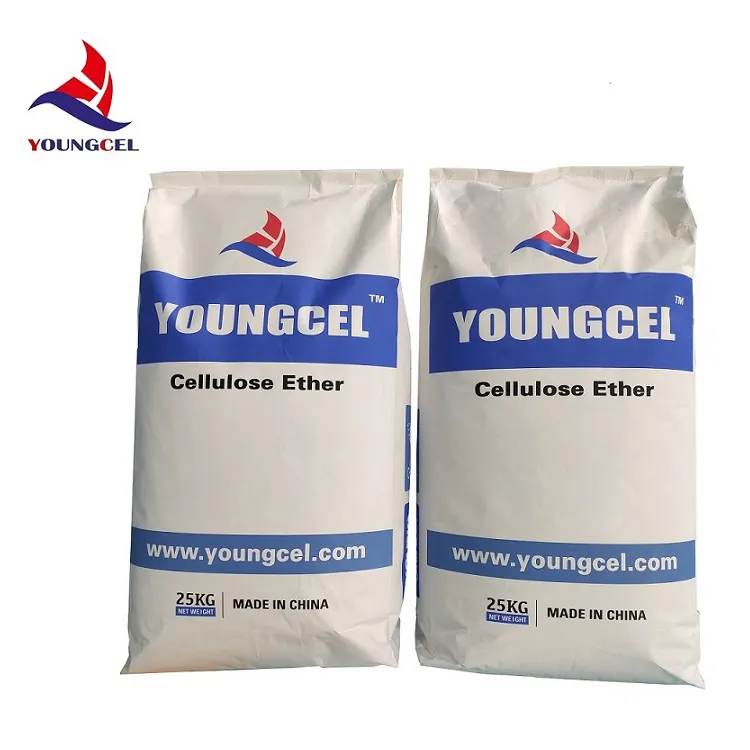The Role and Significance of Cellulose Ether Focus on Hydroxypropyl Methylcellulose (HPMC)
Cellulose ethers are a class of polymers derived from cellulose, one of the most abundant organic compounds on Earth. Among these cellulose derivatives, Hydroxypropyl Methylcellulose (HPMC) has garnered significant attention due to its versatile applications in a variety of industries. This article will explore the properties, applications, and benefits of HPMC, highlighting its importance across different sectors.
Properties of HPMC
HPMC is a non-ionic, water-soluble cellulose ether characterized by its unique chemical structure. It is produced through the chemical modification of cellulose, incorporating hydroxypropyl and methyl groups. This process enhances its solubility in cold water while maintaining a gel-like consistency when mixed with water at higher temperatures. HPMC is available in various viscosities and degrees of substitution, allowing manufacturers to tailor it to specific applications.
One of the most notable properties of HPMC is its thickening ability. In low concentrations, HPMC can significantly increase the viscosity of a solution, which is invaluable in many formulations. Additionally, HPMC acts as a stabilizer, emulsifier, and binder, making it a multifaceted component in product formulations.
Applications of HPMC
HPMC finds extensive use in numerous applications across several industries. In the food sector, it serves as a food additive, where it functions as a thickener, stabilizer, and emulsifier, contributing to the texture and mouthfeel of various food products. Its ability to retain moisture is beneficial in extending the shelf life of baked goods and processed foods.
cellulos ether hpmc

In the pharmaceutical industry, HPMC is widely used in the formulation of tablets, capsules, and controlled-release drug systems. Its biocompatibility and controlled-release properties make it an ideal candidate for developing drugs that require a sustained release over time. Moreover, HPMC is often employed as a film-forming agent in various topical and transdermal applications, enhancing drug absorption through the skin.
The construction industry also benefits from HPMC's unique properties. It is used in cement and tile adhesives as a thickener and water-retention agent, which improves workability and reduces cracking during the drying process. HPMC improves adhesion in construction materials, ensuring a durable bond between surfaces.
In personal care products, HPMC is frequently included in formulations for lotions, creams, and hair products. Its ability to provide smoothness and enhance the spreadability of products makes it a valuable ingredient in cosmetics and skincare formulations.
Benefits of HPMC
The use of HPMC offers several advantages. Being a plant-derived polymer, it is considered safe for use in food and pharmaceutical applications, aligning with consumer preferences for natural ingredients. HPMC's versatility enables manufacturers to tailor its properties to meet specific formulation requirements, leading to enhanced product performance.
Moreover, HPMC is non-toxic and environmentally friendly, making it an attractive option for sustainable product development. Its biodegradability further supports its use in eco-conscious applications.
In conclusion, Hydroxypropyl Methylcellulose (HPMC) is an essential cellulose ether with diverse applications across multiple industries. Its unique properties, coupled with its safety and environmental benefits, solidify its role as a key ingredient in food, pharmaceuticals, construction, and personal care products. As research and development continue, the potential for HPMC to influence various sectors is vast, promising new and innovative solutions for the future.
-
The Application and Significance of Construction RdpNewsMay.19,2025
-
Industrial Grade HpmcNewsMay.19,2025
-
Building Coating Adhesive Building Coating Adhesive HpmcNewsMay.19,2025
-
Application Of Hpmc For Detergent For Detergent In DetergentsNewsMay.19,2025
-
Application Of Hpmc Cellulose In Cement-Based MaterialsNewsMay.19,2025
-
Application Of High Quality Hpmc For Construction In The Field Of ConstructionNewsMay.19,2025




